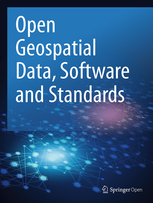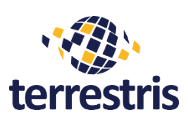 Sonderheft in der Zeitschrift „Open Geospatial Data, Software and Standards“
Sonderheft in der Zeitschrift „Open Geospatial Data, Software and Standards“
Veröffentlicht im Oktober 2017
Quelle: https://opengeospatialdata.springeropen.com/oserm2
Open Science for Earth Remote Sensing: latest developments in software and data
In den letzten Jahren haben sich in der Fernerkundung erhebliche Veränderungen ergeben. Quantität, Qualität und Vielfalt der Sensoren haben exponentiell zugenommen und damit auch die entsprechenden Daten. Open-Source-Softwarepakete, die digitale Bilder verarbeiten können, wurden hinsichtlich der Anzahl der verfügbaren Programme, implementierter Algorithmen und der Stabilität verbessert. Die Geschwindigkeit des Internets steigt jedes Jahr um 50 % (Nielsen-Gesetz), und diese Tatsache sowie das wachsende Bewusstsein für die Bedeutung von Zusammenarbeit und Austausch durch offenen Zugang zu Daten haben die öffentliche Verfügbarkeit von Fernerkundungsdatenbeständen erhöht.
Die oben skizzierten Trends deuten darauf hin, dass die Fernerkundungswissenschaft leichteren Zugang zu Daten hat, die exponentiell an Volumen, Geschwindigkeit und Vielfalt zunehmen. Jeder Teil der Erdoberfläche wurde und wird regelmäßig von zahlreichen aktiven und passiven Bildsensoren erfasst, die sich in der Auflösung (räumlich, spektral und radiometrisch), in der Wiederholrate und im Sensormodus (passiv, aktiv) unterscheiden. Die oben genannten Merkmale können in einigen Fällen dazu führen, dass bei der Bildanalyse ein „big data“ -Ansatz in Betracht gezogen wird.
Seit Jahrzehnten leistet die Open-Source-Gemeinschaft enorme Beiträge zur Fernerkundung in Form von Tools und Lösungen, die Forschung, Entwicklung und Endanwendern Unterstützung und Inspiration bieten. Die Entwicklung des offenen Zugangs zu Daten und Werkzeugen und die damit verbundenen Vorteile in der Wissenschaft für die Erdbeobachtung waren die Motivation für diese Sonderausgabe, die es sich zum Ziel gesetzt hat, über vergangene, gegenwärtige und zukünftige Szenarien der „offenen“ Teile des Fernerkundungsprozesses von der Datenerhebung über die Analyse bis hin zum Endergebnis zu berichten.
Gast-Editoren
Dr. Francesco Pirotti, University of Padova, Italy
Dr. Markus Neteler, mundialis GmbH & Co. KG, Bonn, Germany
Dr. Duccio Rocchini, Fondazione Edmund Mach, Italy
Inhalt
- Preface to the special issue „Open Science for earth remote sensing: latest developments in software and data„
- Remote sensing of burned areas via PCA, Part 1; centering, scaling and EVD vs SVD
- Remote sensing of burned areas via PCA, Part 2: SVD-based PCA using MODIS and Landsat data
- Open source R for applying machine learning to RPAS remote sensing images
- Orfeo ToolBox: open source processing of remote sensing images
- MicMac – a free, open-source solution for photogrammetry
- Improving FOSS photogrammetric workflows for processing large image datasets
- A combined change detection procedure to study desertification using opensource tools
- Generalized 3D fragmentation index derived from lidar point clouds
- OpenDragon: software and a programmer’s toolkit for teaching remote sensing and geoinformatics
- Fusion of high-resolution DEMs for water flow modeling
